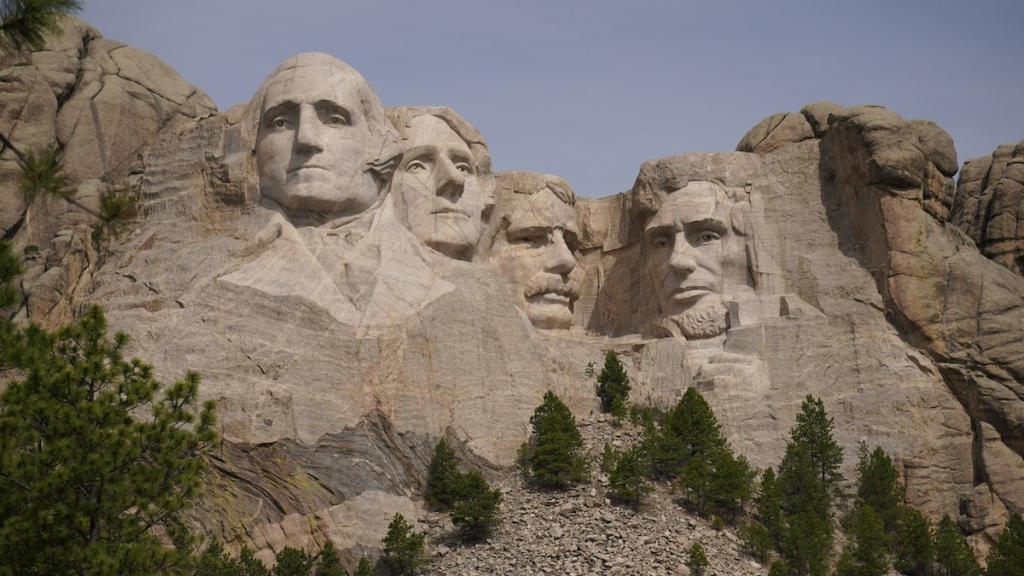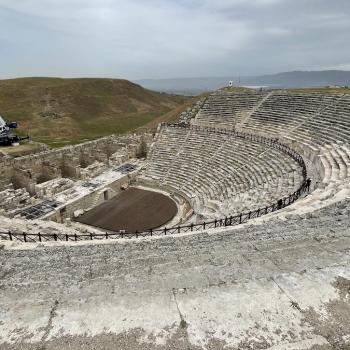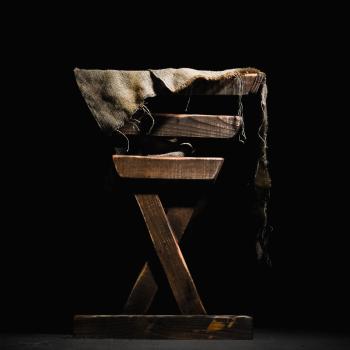
If I had a minor in my doctoral work it was historical theology. I’m particularly fascinated with how history is written. At times there appears a bias designed to propagate a particularly desirable narrative. At first, the writing of history might not be motivated by a bias, but after further reflections and the discovery of more historical sources, a clear bias emerges. Throughout history, there are numerous examples such as Pelagius being accused of heresy in the fourth century, Luther’s antisemitism being swept under the rug in the 16th century, and George Washington’s cutting down the cherry tree in the 18th century to name a few. When these presumed orthodox views of history are challenged by new research or additional facts, it is labeled historical revisionism.
Like any writing of history, historical revisionism can be motivated by bias. However, for the genuine historian, the right motivation is an accurate understanding of history, even if that means a rewriting of long held orthodox views. For as Marcus Cicero once quipped,
“Not to know what has been transacted in former times is to be always a child. If no use is made of the labors of past ages, the world must remain always in the infancy of knowledge.”
To that end, it is a proper historical exercise to revisit our cherished narratives and scrutinize them in light of the intentions of historical actors. On this President’s Day, Thomas Jefferson is such an actor who merits to be understood in his historical context.
Jefferson’s White America
Early American identity was fixated on White Europeans. After the War of Independence and the subsequent Treaty of Peace of 1783 that allowed the newly formed United States of America to occupy land from the Appalachian Mountains to the Mississippi River, the government looked for means to rid the region of Native Americans. Not only did the treaty liberate the United States from British control, but Congress believed the treaty gave them explicit claim to Indian Territory. Henry Knox, Secretary of War in 1789 wrote, “Congress were of the opinion, that the Treaty of Peace, of 1783, absolutely invested them with the fee of all the Indian lands within the limits of the United States; that they had the right to assign, or retain such portions as they should judge proper.”[i]
The hunter/gatherer lifestyle of the native population was evidence enough for the Enlightenment educated third president of the United States, Thomas Jefferson (1743-1826), to write, “The end proposed should be their extermination, or their removal beyond the lakes of Illinois river. The same world will scarcely do for them and us.”[ii] Jefferson believed that even though Native Americans exhibited signs of civilization their ultimate civility in the Euro-American sense might not be in their fate. In his mind one of two things might occur; either they would be assimilated into American society or they would be extinguished.
Jefferson’s Vision
According to Anthony Wallace, “The Jefferson vision of the destiny of the Americas had no place for Indians as Indians.”[iii] Jefferson, and by extension Jeffersonians, viewed liberty from an ethnocentric perspective. The “We” of “We the people of the United States” were not simply any people, but explicitly Euro-Americans and specifically men. Summarizing Jefferson’s ethnocentrism and male chauvinism, Joyce Appleby, professor of history at UCLA wrote,
“Jefferson raised his voice against slavery on several important occasions, but died convinced that Whites and free blacks could never prosper together once slavery ended. He enjoyed the conversation of intelligent women, but taught his daughters that women were created for men’s pleasure. He approached Native American culture with avid curiosity, but recommended the ruthless destruction of Indian ways. These repellent convictions jostled strangely with Jefferson’s generous conception of the human potential.”[iv]
Wallace further noted, “The Jeffersonian state was not an empire; it was egalitarian, democratic and ethnically exclusive.”[v] Even though Chief Justice of the Supreme Court John Marshall (1755-1835) referred to Native Americans as “domestic dependent nations,” many in the US government believed they were among the “spoilers of the American dream,” or at least the Jeffersonian version of the dream. In some ways, the manner in which the U.S. government treated native people was nothing short of genocide, or to be more charitable, at least cultural cleansing.[vi]
Jefferson’s Civilization
While Jefferson was at times optimistic in regards to the civilization of the Indians taking place by his first congressional address of his presidency, his optimism related to southern tribes. Even though Indian relations were an important aspect of his policies, he was more concerned with seeing the White population fill the newly formed republic.[vii] His Indian policy pursued peace as much as was possible. Along with peace, land was of primary importance in order to ensure White settlers places to expand the reach of the new government. Ultimately his hope was for the “civilization” of the Indians and the prevention of inciting the British and French to war.
In an 1803 letter to William Harrison, then governor of the Indiana Territory, Jefferson stated his desire to live in peace with the Indians. His hope was that they would be drawn to an agrarian lifestyle as the wildlife they hunted disappeared. By so doing, Jefferson hoped that the Indians would find that they no longer had need of the forest and would be willing to sell them for necessities they required in order to farm. He wrote to Harrison in confidence that he would not let the Indians know his plans. The third US president, so it appeared, was attempting to lure the Indians into becoming dependent on farming and on the necessities the U.S. government could provide. Jefferson wrote,
“To promote this disposition to exchange lands, which they have to spare and we want, for necessaries, which we have to spare and they want, we shall push our trading uses, and be glad to see the good and influential individuals among them run in debt, because we observe that when these debts get beyond what the individuals can pay, they become willing to lop them off by a cession of lands.”[viii]
Jefferson and Indian Land
The strategy to acquire Indian lands by indebting them to the government appeared in multiple letters of Jefferson. The government tried to dissuade traders from interaction with Indians in order to fulfill this strategy. The Trade and Intercourse Act of 1790 was reinstated under Jefferson in order to prevent the settlers from carrying on any exchange of goods or dialogue with the Indians. Jefferson’s strategy to dispossess the Indians of their land included exclusive trade with the government.
With exclusive trading rights, the government could set the price of goods which ultimately would indebt the Indians. Repayment of the debt could only be made in land. By the end of his presidency, Jefferson secured some 200,000 square miles of Indian land. The acquisition was as much for expansion as it was for a military strategy that essentially secured supply routes and pushed the tribes to the interior of the country in order to encircle and thus control them.[ix]
Jefferson and Native Culture
Jefferson was certainly interested in native culture. However, such interest was purely academic. Politically, he had a different agenda and he would not be alone. Andrew Jackson (1767-1845) would also be complicit in U.S. mistreatment of indigenous people. There were certainly glimmers of hope in U.S. relations with the so-called Five Civilized Tribes.[x] However, in the end, economically motivated policy would see the dispossession of their lands for the sake of White prosperity in the form of gold discovered on native land.
While Jefferson and Jackson’s view of Native Americans seem to contradict their views of natural rights and equality with universal freedom, they were products of the predominant Euro-American worldview. It was a worldview that was profoundly ethnocentric with a desire to insure prosperity that eluded many in Europe. That prosperity undoubtedly included the White expansion from the eastern to the western coast.
Notes
[i]Report of Henry Knox on the Northwestern Indians (June 15, 1789) American State Papers: Indian Affairs, I: 13-14.
[ii]Joyce Appleby, Thomas Jefferson (New York: Henry Holt, 2003), 105.
[iii]Anthony F. C. Wallace, Jefferson and the Indians: The Tragic Fate of the First Americans (Cambridge, Mass.: Belknap, 1999), 11.
[iv]Appleby, Thomas Jefferson, 3.
[v]Ibid., 18.
[vi]Article 2 of the United Nations’ Convention on the Prevention and Punishment of the Crime of Genocide states that genocide relates to any act that is committed “with the intent to destroy, in whole or in part, a national, ethnical, racial or religious group.” See http://www.hrweb.org/legal/genocide.html. Among acts of genocide are 1) killing group members, 2) causing serious bodily or mental harm to group members, 3) deliberately inflicting conditions that would result in physical destruction of a group either in whole or in part, 4) imposing birth control, 5) forcibly transferring a group’s children to another group. According to the convention, the U.S. treatment of Native Americans was genocide.
[vii]Wallace, Jefferson and the Indians, 206.
[viii]President Thomas Jefferson to Governor [of Indiana Territory] William H. Harrison (February 27, 1803).
[ix]Wallace, Jefferson and the Indians, 239.
[x]Cherokee, Chickasaw, Choctaw, Creek and Seminole people made up the Five Civilized Tribes due to the fact that they adopted many of Euro-American customs.











